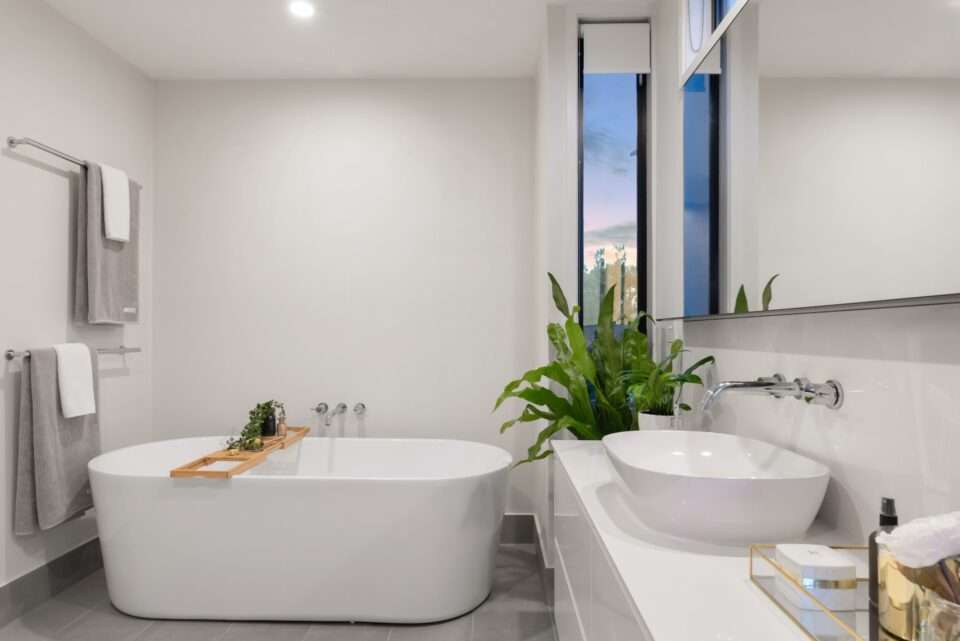A QS Supplies study found that people from 44 states prefer bathing over showering, making bathtubs an essential part of the bathroom. Bathtubs are perfect for soaking away the day’s worries and relieving stress. Having a nice hot bath also lowers muscle pain and improves cardiovascular health.
Due to multiple health benefits, bathtubs have become a must for all homeowners. Now, bathtubs are available in different styles to enhance the bathroom’s interior. Therefore, it is important to find a bathtub that complements the house decor.
For those seeking therapeutic benefits, an ice bath can be a great option to soothe sore muscles and reduce inflammation. You can find specially designed ice bath tubs at Pod Company, known for their innovative designs and high-quality products.
Bathtub Styles and Their Features
These are some of the most popular bathtub designs for installation based on their features:
Freestanding Bathtub
Unlike traditional bathtubs, freestanding tubs are not attached to a wall or the floor. Instead, they independently stand on their own to make the bathroom appear spacious and elegant. Homeowners can also install these tubs near windows to enjoy a captivating view during the bath.
These tubs come in multiple materials, such as acrylic, stainless steel, copper, fiberglass, stone, and more. Any material can be selected based on durability, affordability, and home décor theme. For example, acrylic tubs are strong, lightweight, and easy to install. In addition, it is stain and scratch-resistant, maintaining an aesthetic look for a long period.
Freestanding bathtubs also have various shapes to ensure it fits in limited spaces, which are:
- Single/Double-Ended Tub: One or both sides of the tub are sloped, working as a headrest.
- Slipper Tub: One end of the tub is raised, and the other end act as a seating area, giving the tub the look of a high-heeled slipper.
- Pedestal Tub: The tub is placed on a raised matching platform.
- Footed (Clawfoot) Tub: The tub has four stylish feet that resemble an animal’s claws.
Freestanding tubs have a standard size of 5 feet (60 inches) long, 2.5 feet (30 inches) wide, and 1.89 feet (19 inches) water depth. However, people can buy bigger or smaller versions according to the available space in their bathroom.
Alcove Bathtubs
Alcove bathtubs are enclosed on three sides by walls and are mostly installed as a tub/shower combination. These tubs are placed in the bathroom recess or a pocket alcove. Hence they are also known as recessed bathtubs. However, the latest designs of alcove bathtubs are manufactured for two walls support. These alcove tubs are usually placed in front of a large window to decrease the confined nature of the installation method.
Alcove bathtubs lack flexible sizing as the standard size ranges from 50 to 70 inches in length and 25 to 42 inches in width. Homeowners can either install a larger size or the standard one based on the available space in the bathroom. Therefore, these tubs are not practical to install in less space.
The tub comes in different combinations of shower stalls. For example, it can be customized with powered shower jets for a more relaxing bathing experience. Otherwise, they can be fitted with a normal shower screen and shower head to transform into a practical shower stall. An alcove bathtub with shower stall features improves practicality and increases a home’s value by alleviating its interior design.
Homeowners can choose an alcove bathtub made from these materials:
- Fiberglass: Fiberglass alcove bathtubs are made from layers of fiber-reinforced plastic sheets that are coated with gel resin. This is the most economical bathtub material, but its porous properties make the tub unstable over time.
- Acrylic: Acrylic alcove bathtubs are manufactured similarly to fiberglass ones. However, they are coated with vacuum sheets of acrylic to make the tub tougher and less water absorbent. The drawback of acrylic is that it discolors and yellows with time.
- Cast Iron: Cast iron alcove bathtubs are molded from molten iron. Therefore, these tubs are durable, good at retaining heat, and pretty easy to clean, but they cost more than fiberglass and acrylic tubs.
Walk-In Bathtubs
Instead of the traditional climbing in and out feature of a bathtub, walk-in bathtubs have a door that allows the user to walk in to eliminate the risk of slipping and falling. These tubs also contain footholds and handlebars to further reduce falling hazards. Walk-in bathtubs have one or more seats to create sitting space for the bather.
Compared to normal bathtubs, walk-in ones are steeper and have better water depth. These tubs are almost 40 to 48 inches deep with a 17 inches tall seat. To fill this tub, the user has to be inside the tub. Otherwise, the water will flow out once the door is opened. Once the bath is done, the user has to wait at least 15 minutes for the tub to drain completely to get out of the tub.
Walk-in bathtubs are mostly used by seniors or physically injured people who have less range of motion. Since these tubs have powerful jets and aromatherapy features, people without serious health conditions can also use this bathtub to enjoy a premium bathing experience.
Wrapping Up
Bathtubs work amazingly for relaxing muscles, relieving stress, and alleviating certain health conditions. They also improve the bathroom’s aesthetics by freeing up floor space. Therefore, homeowners should compare each bathtub style and its features to choose the correct one for their bathroom.

